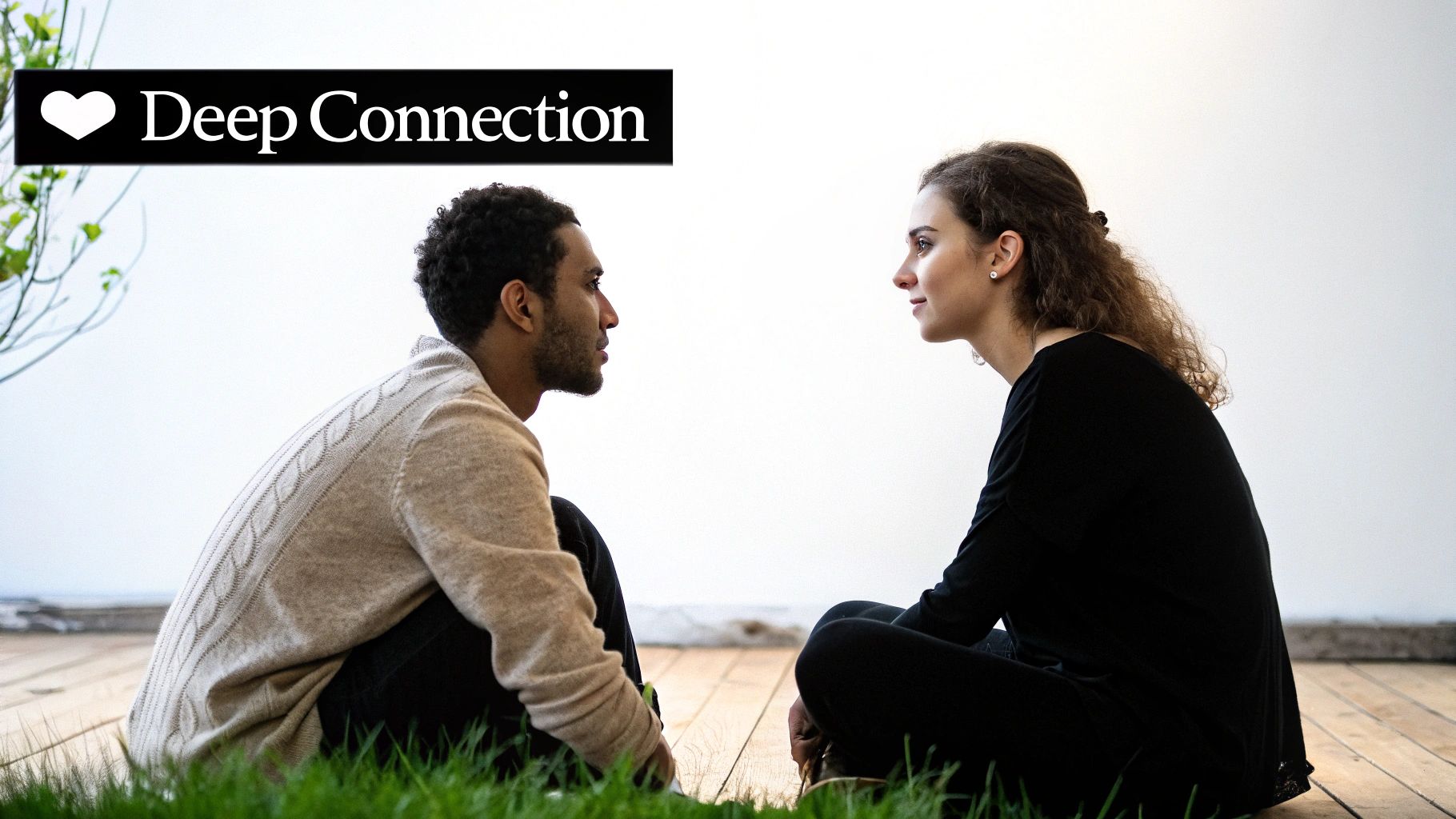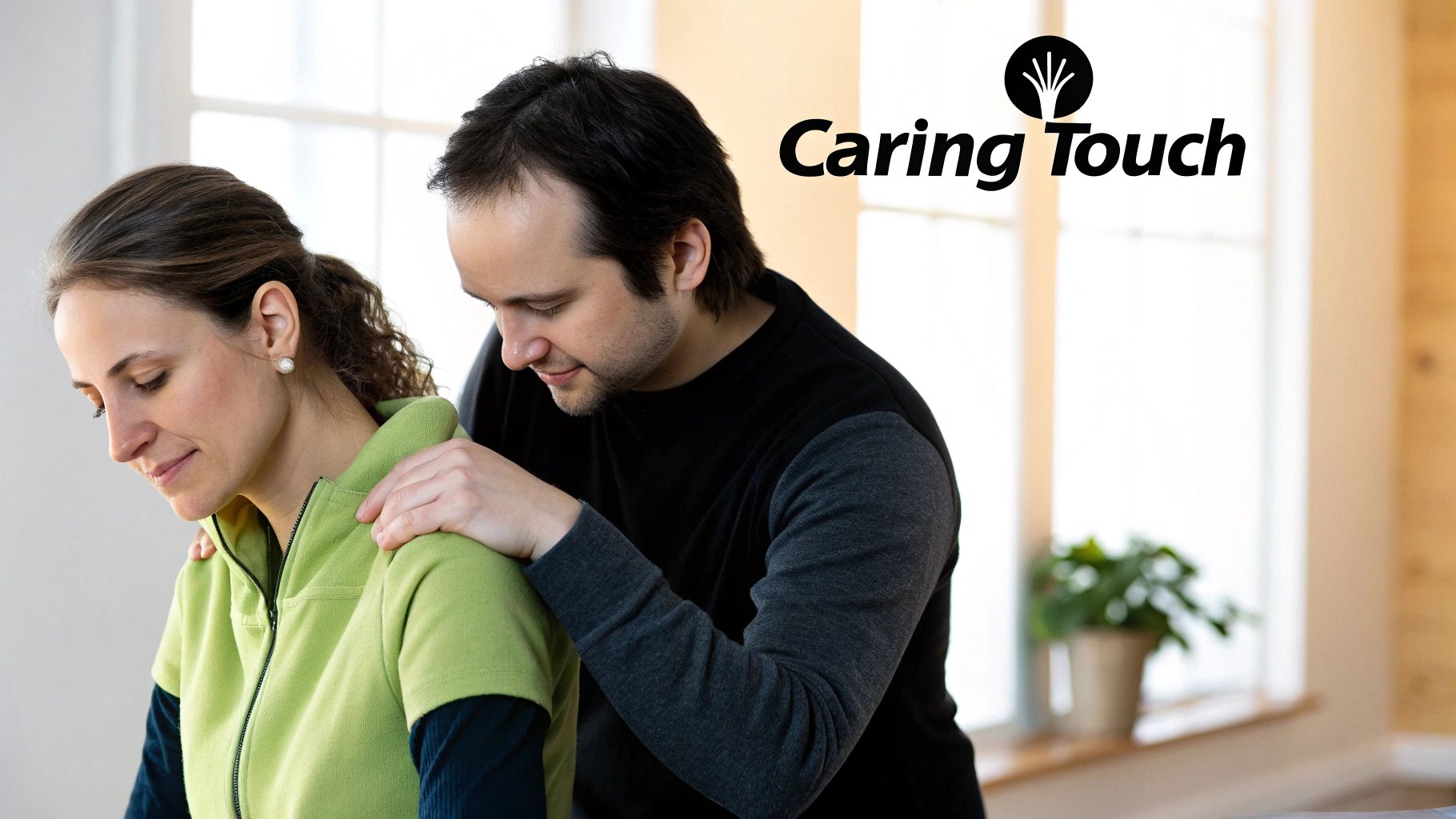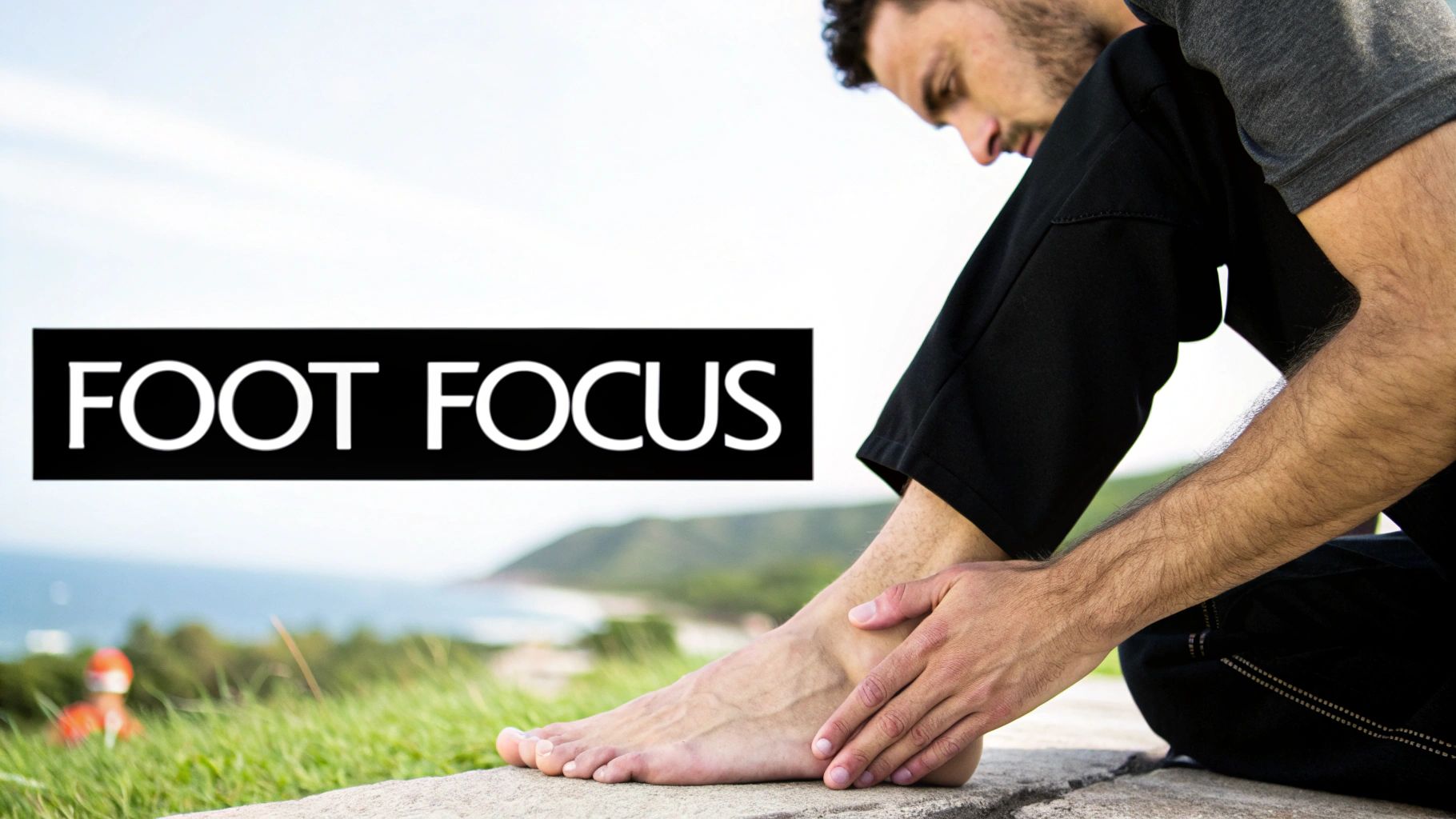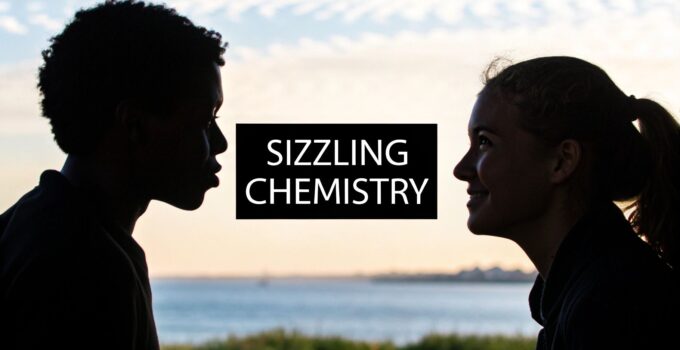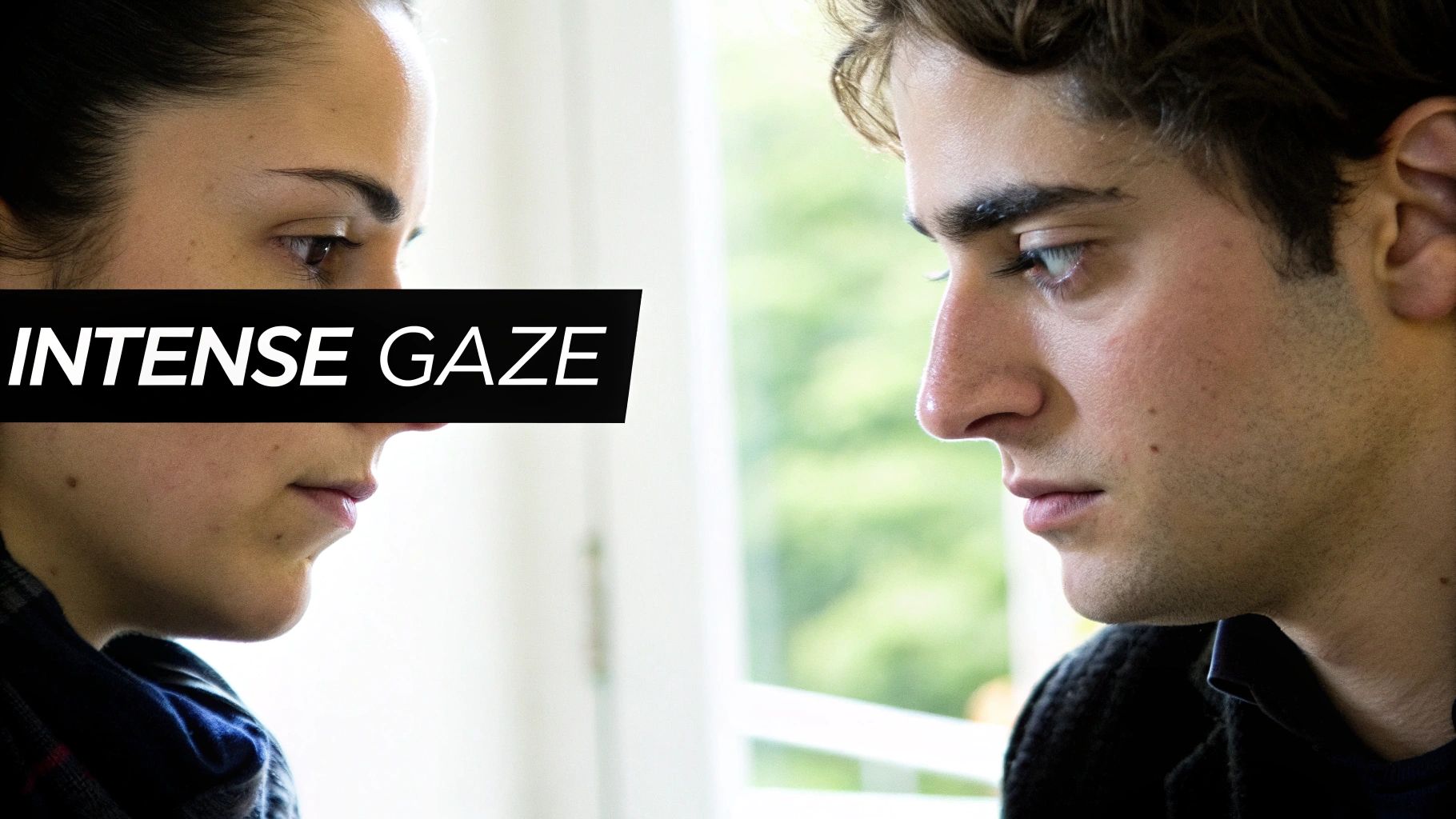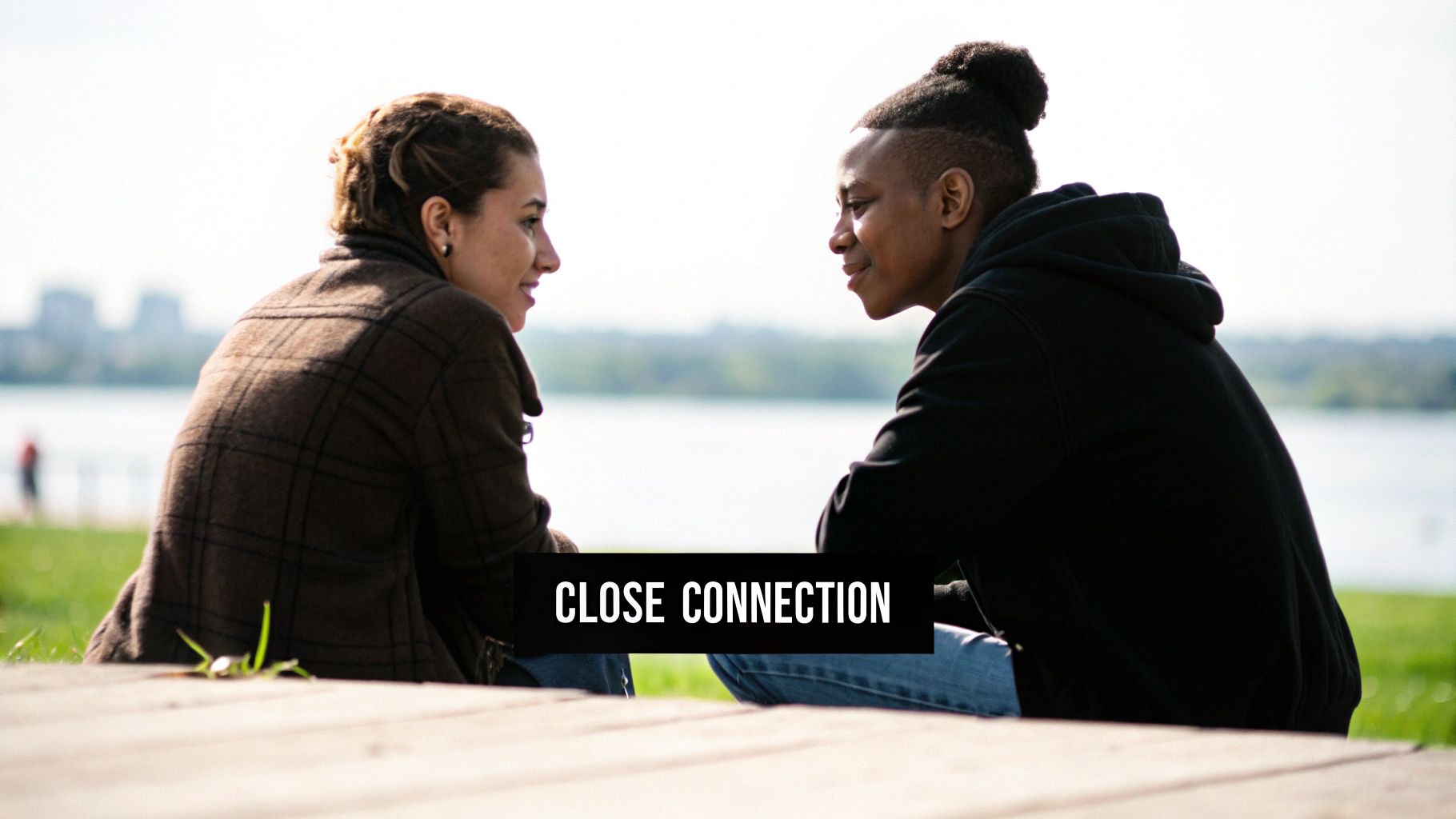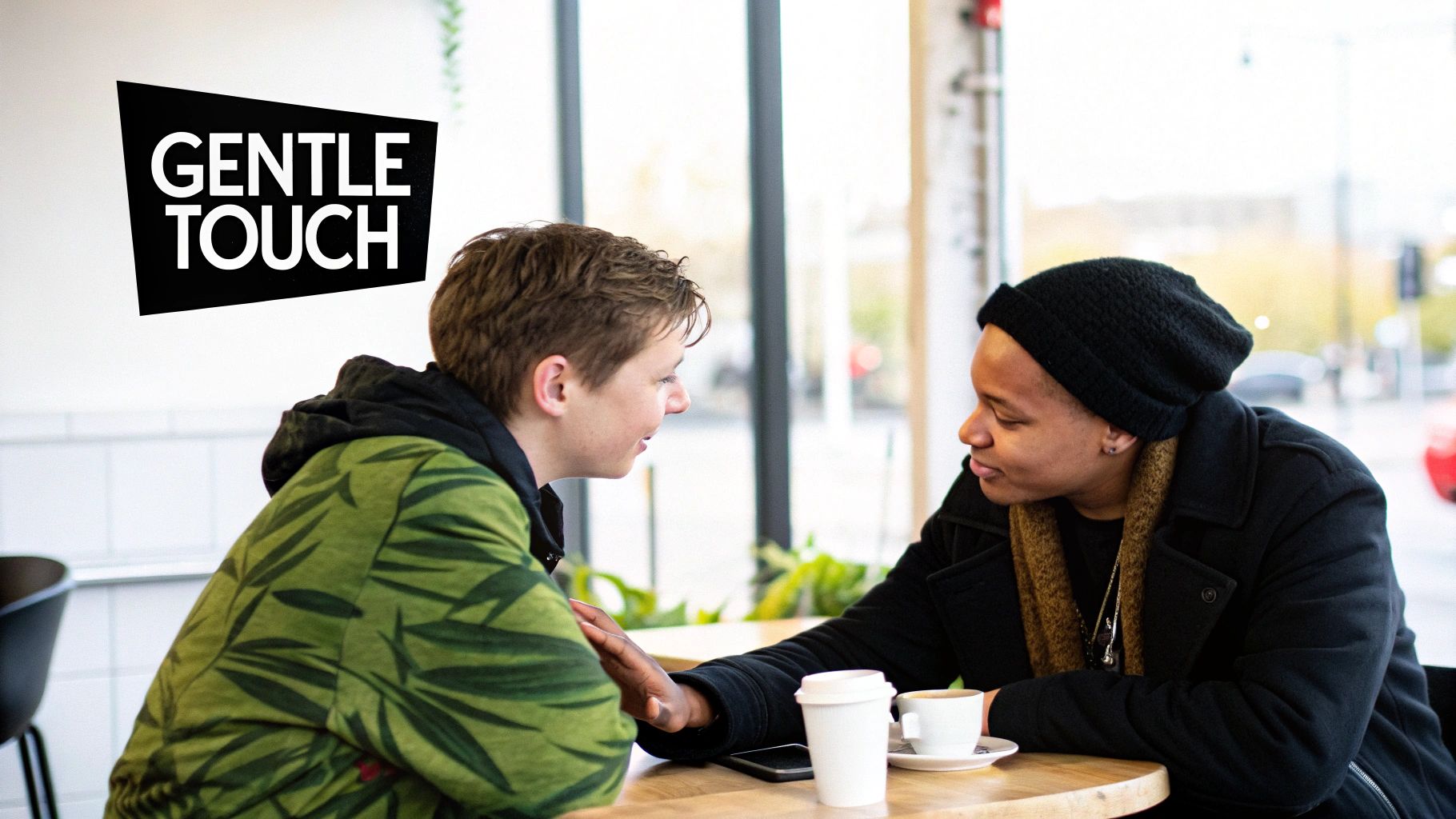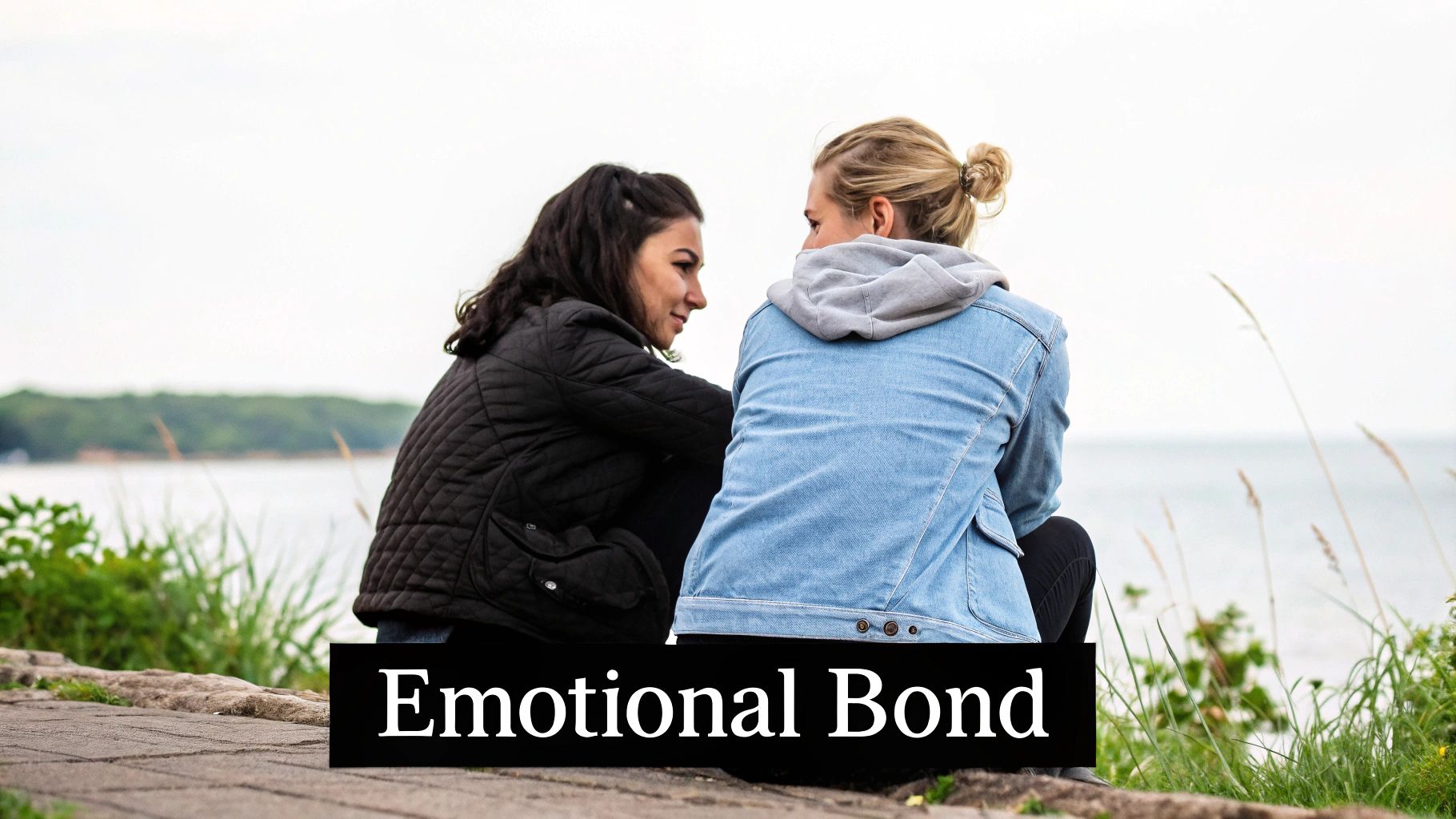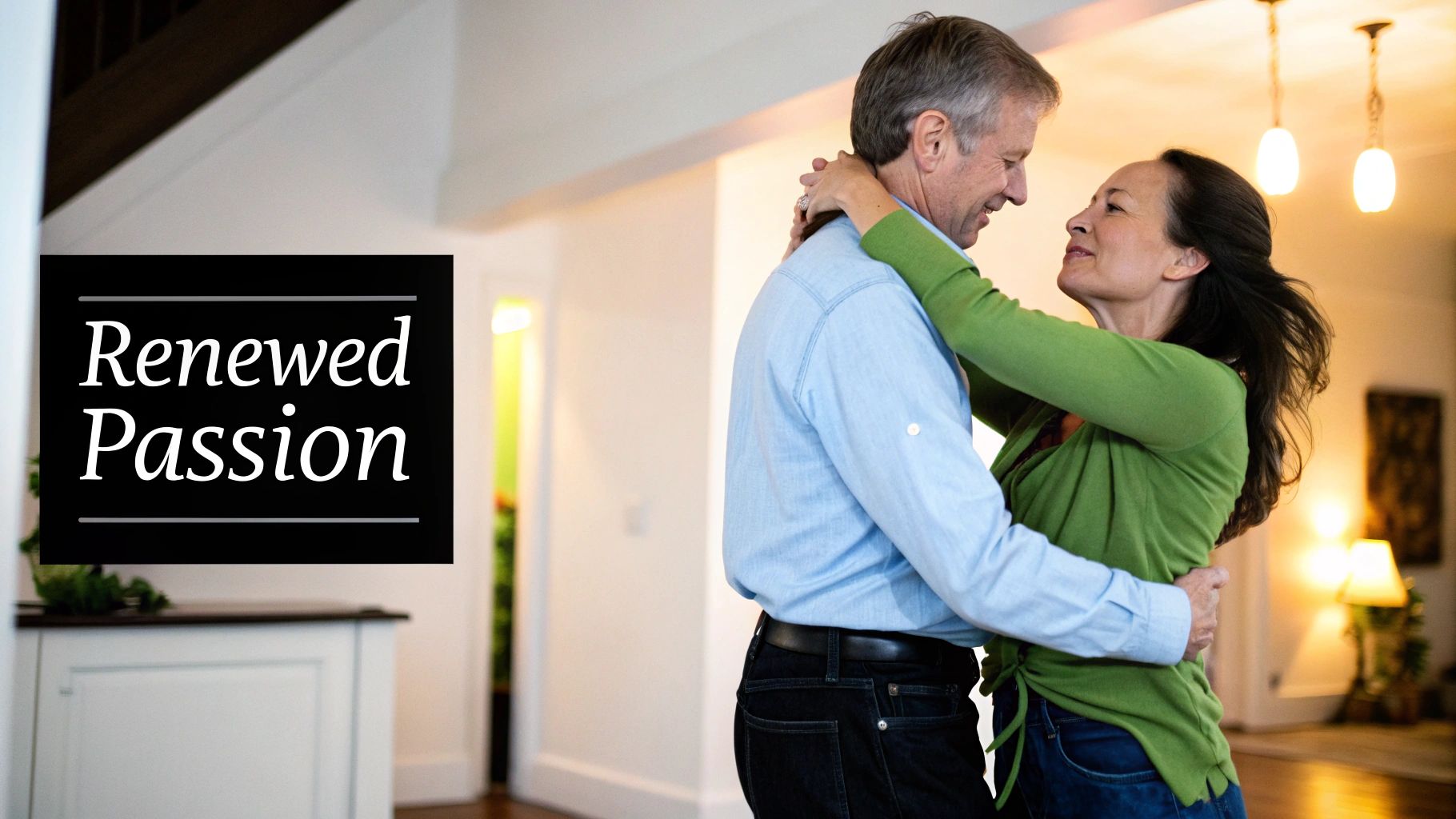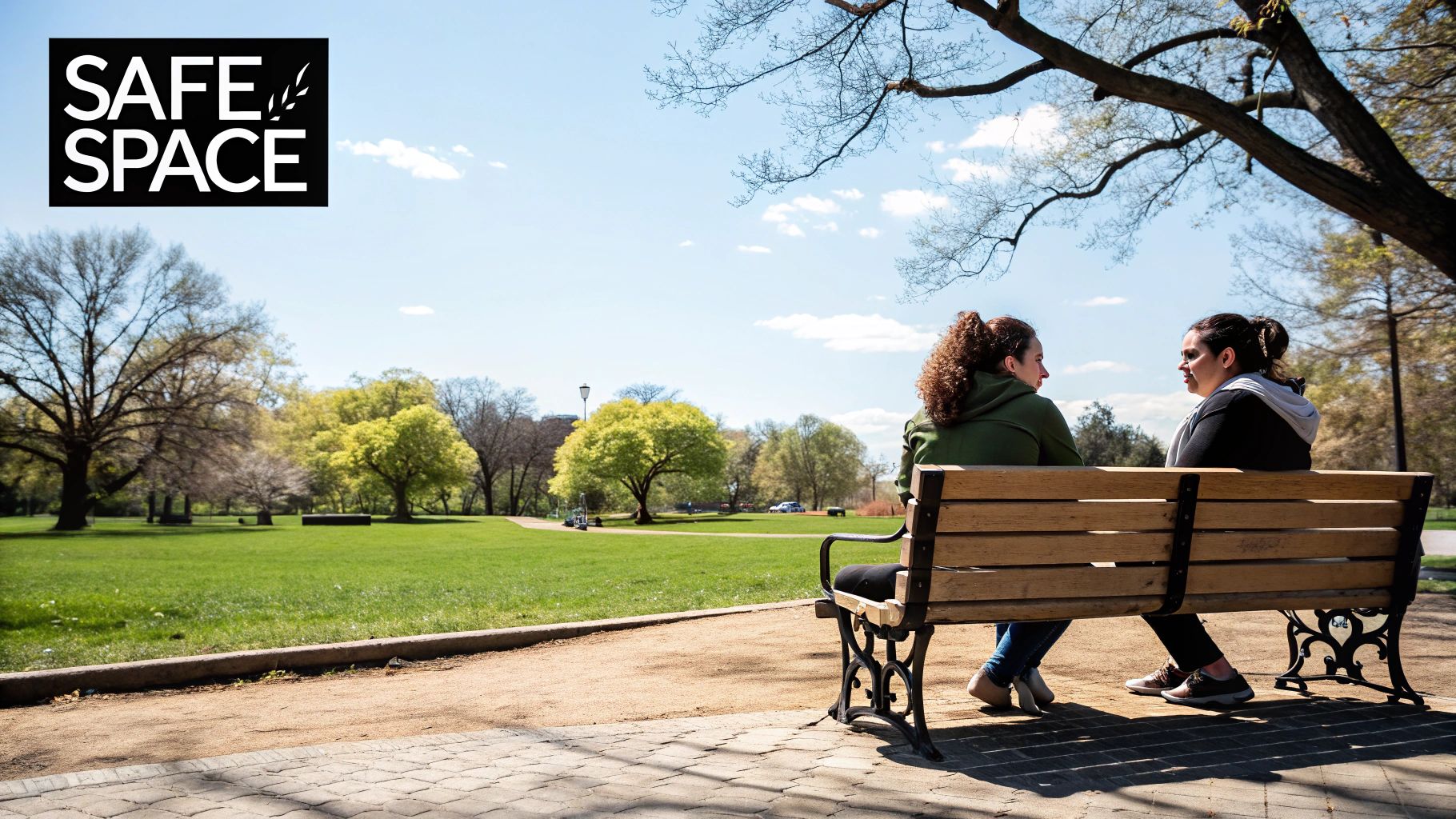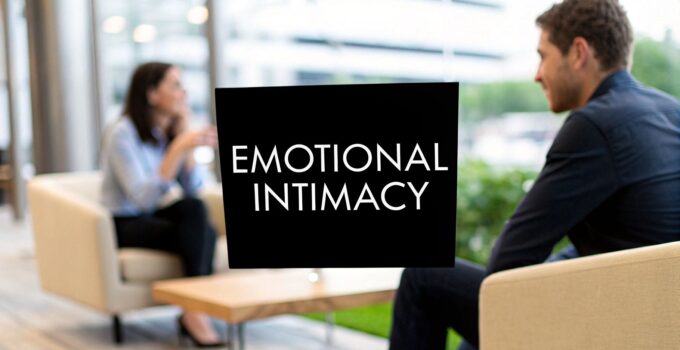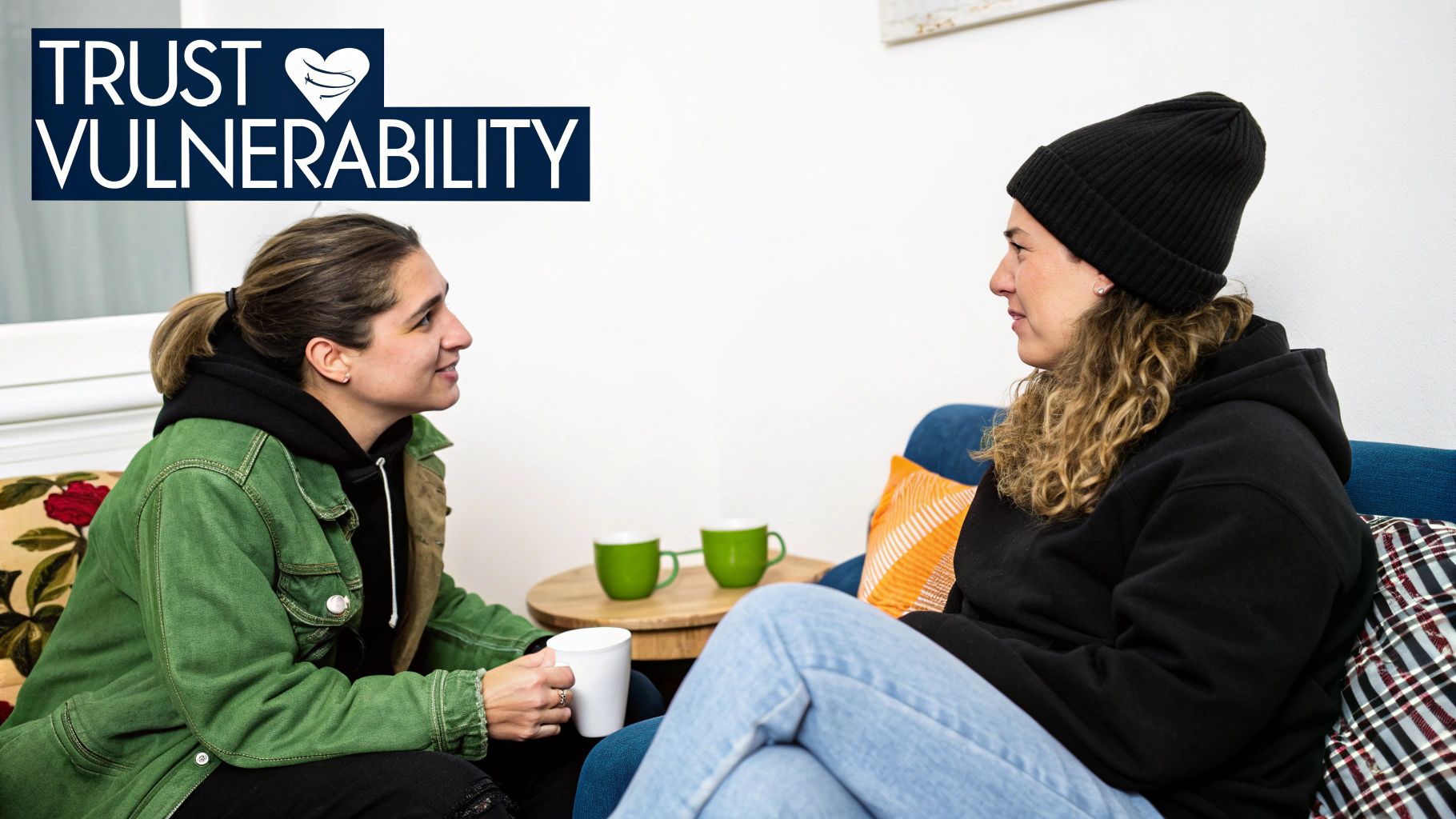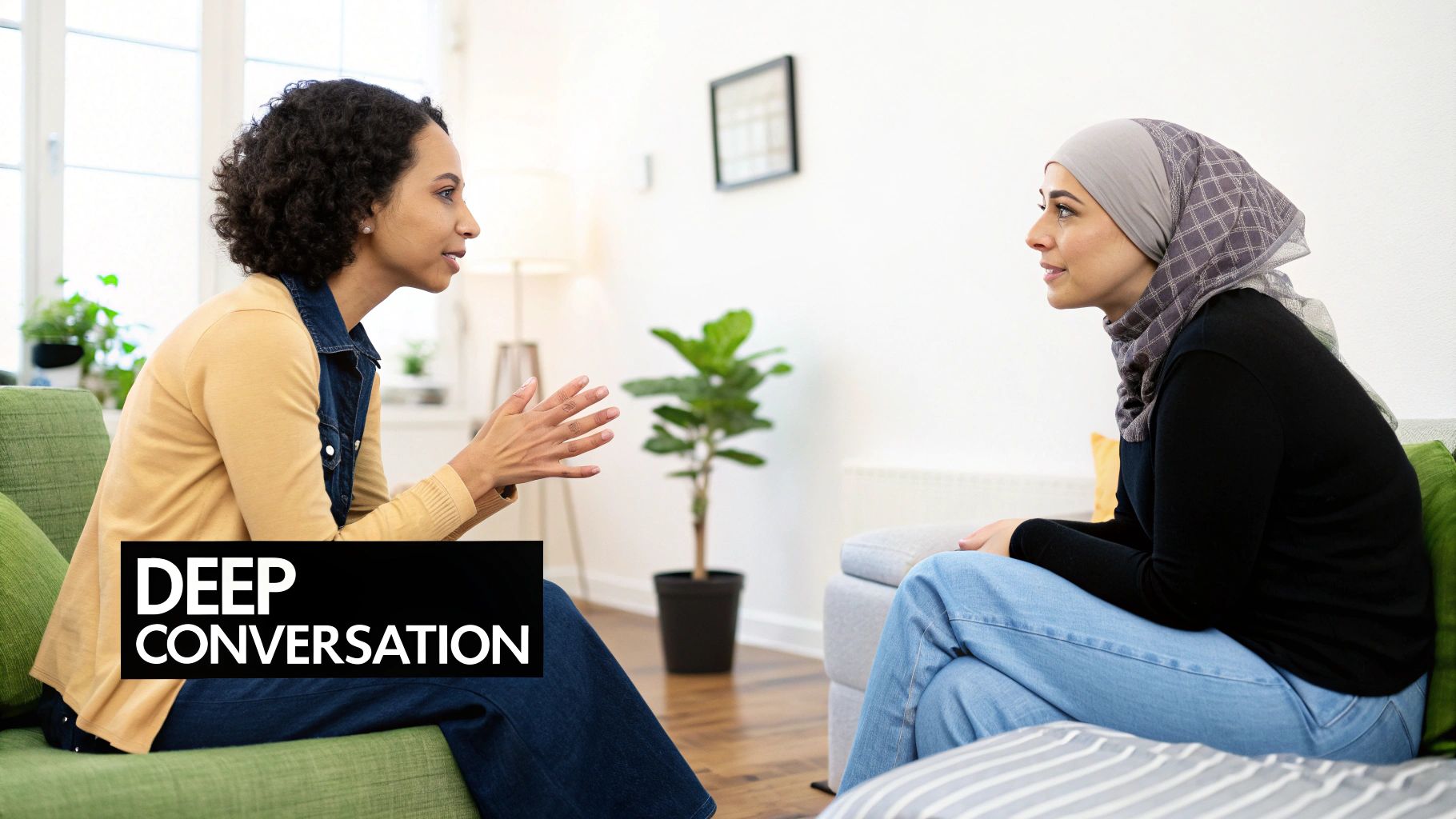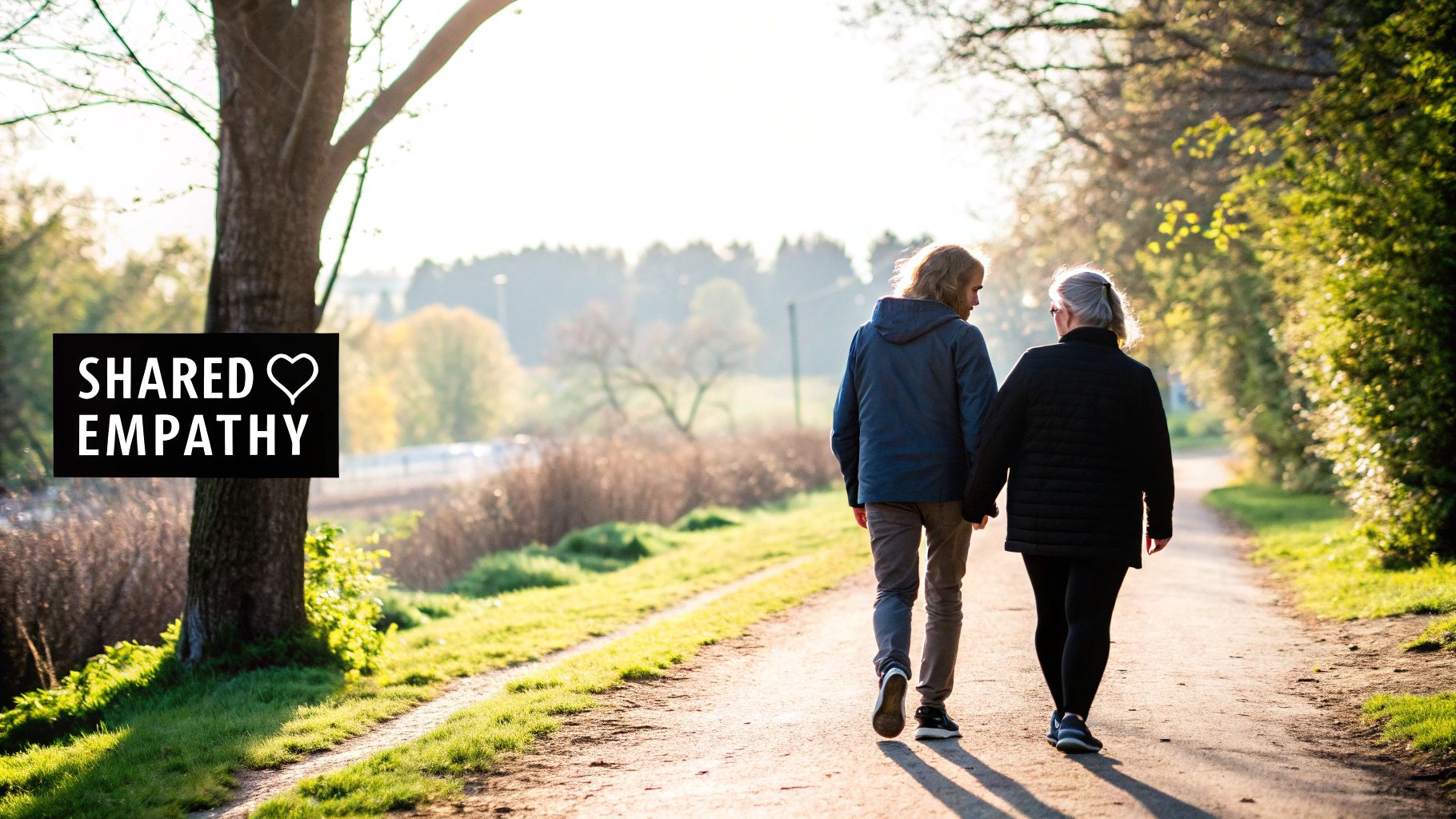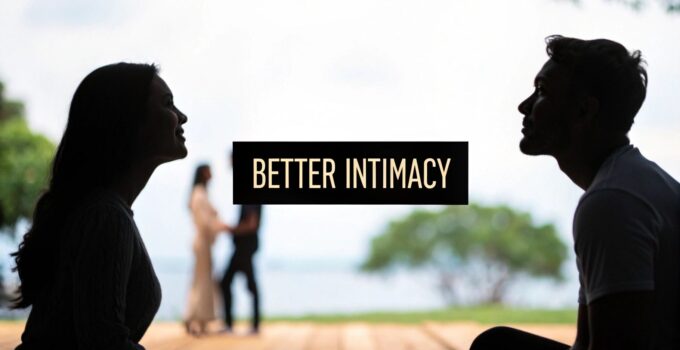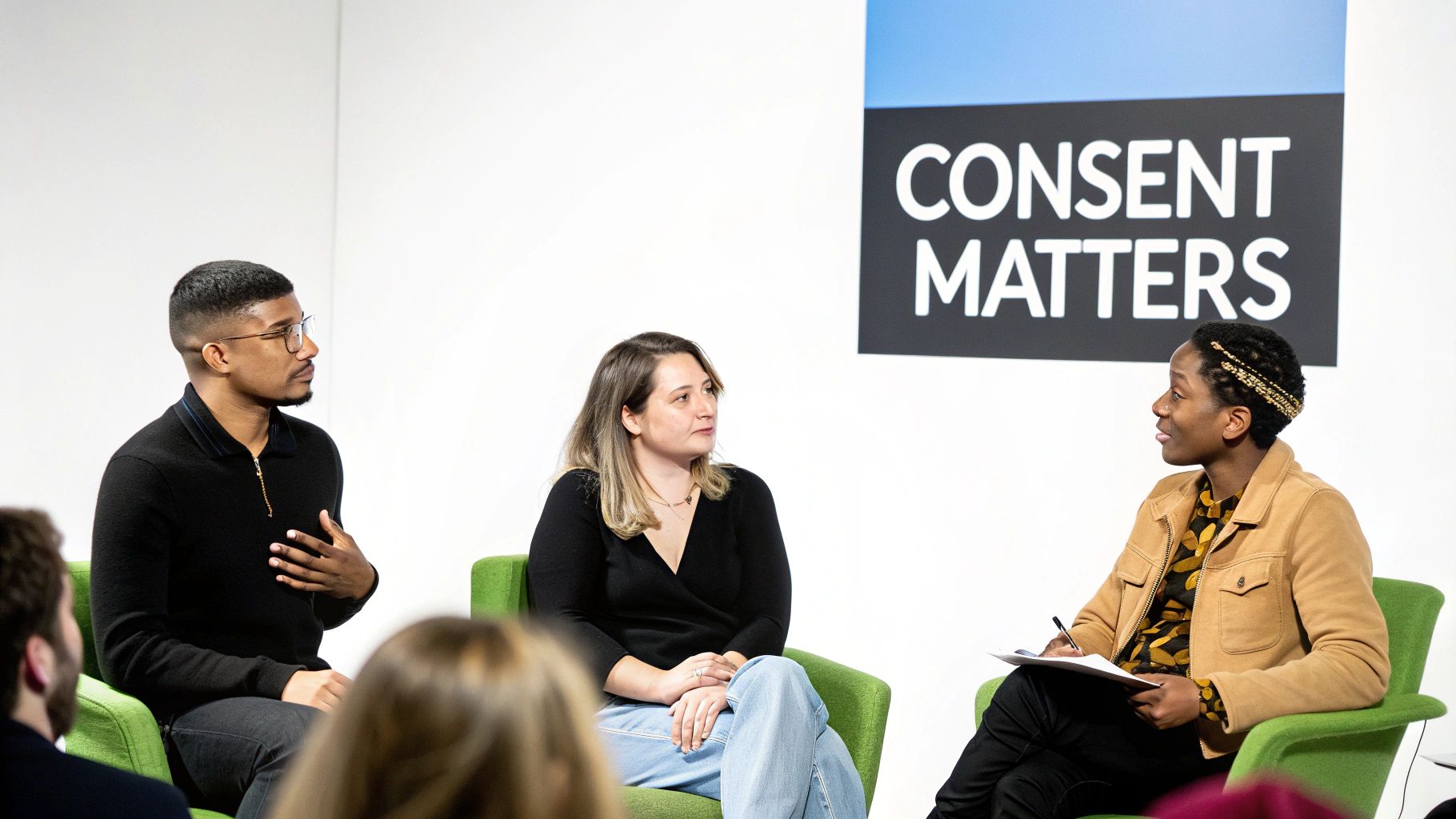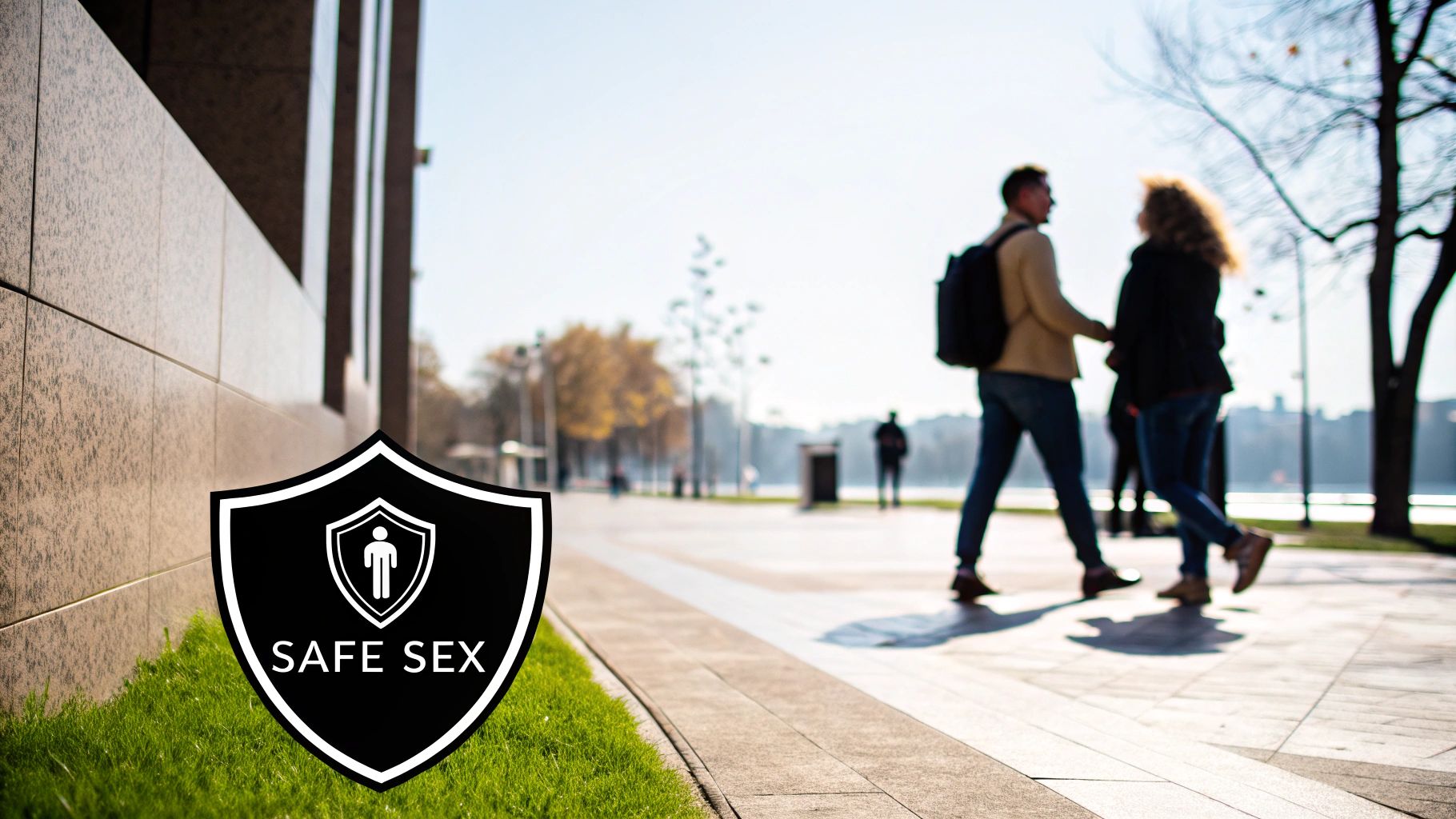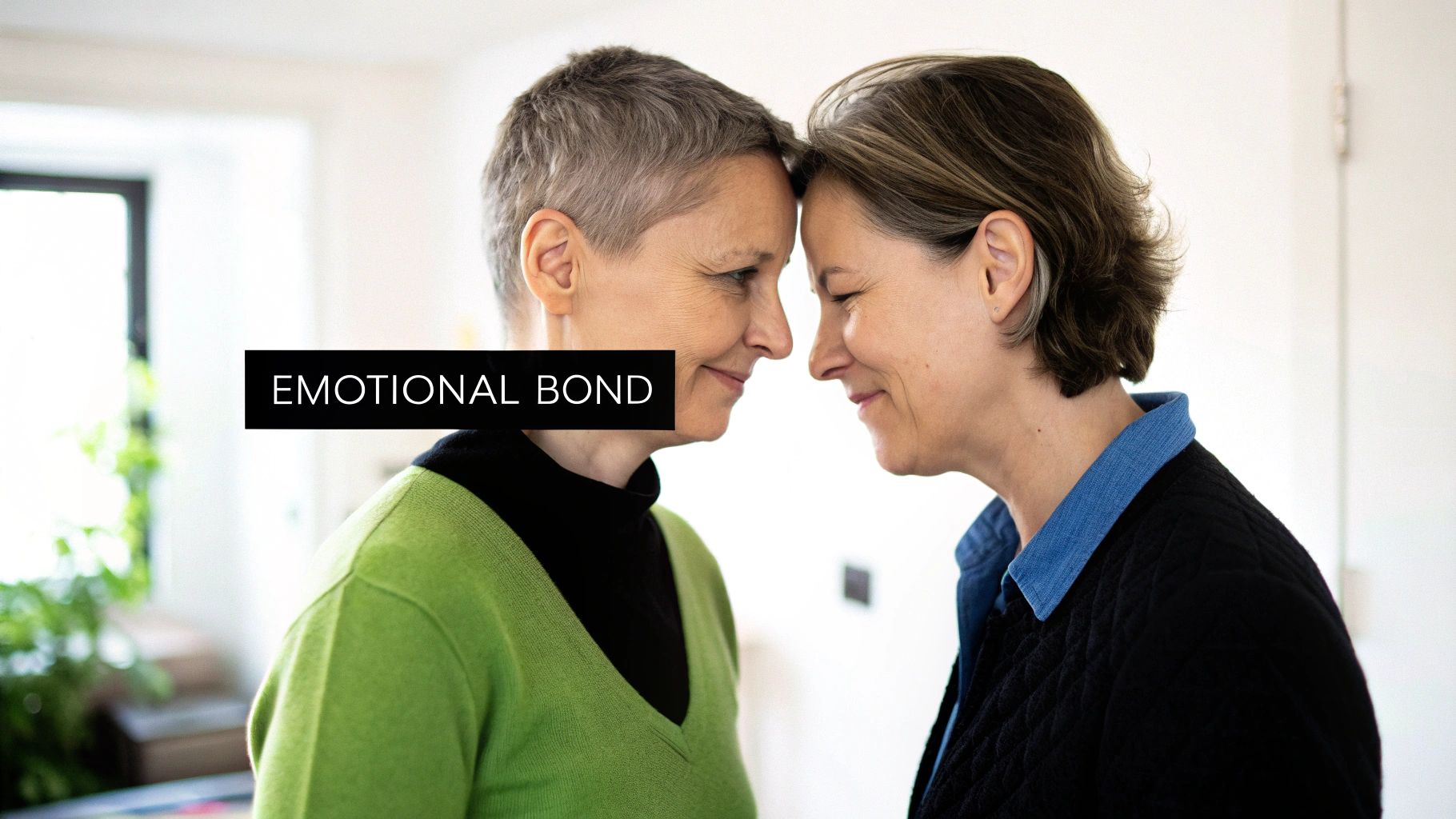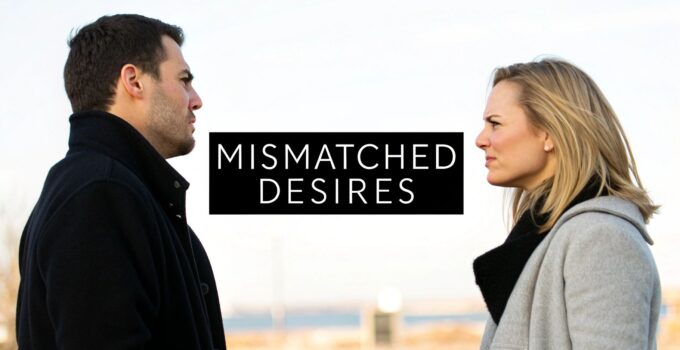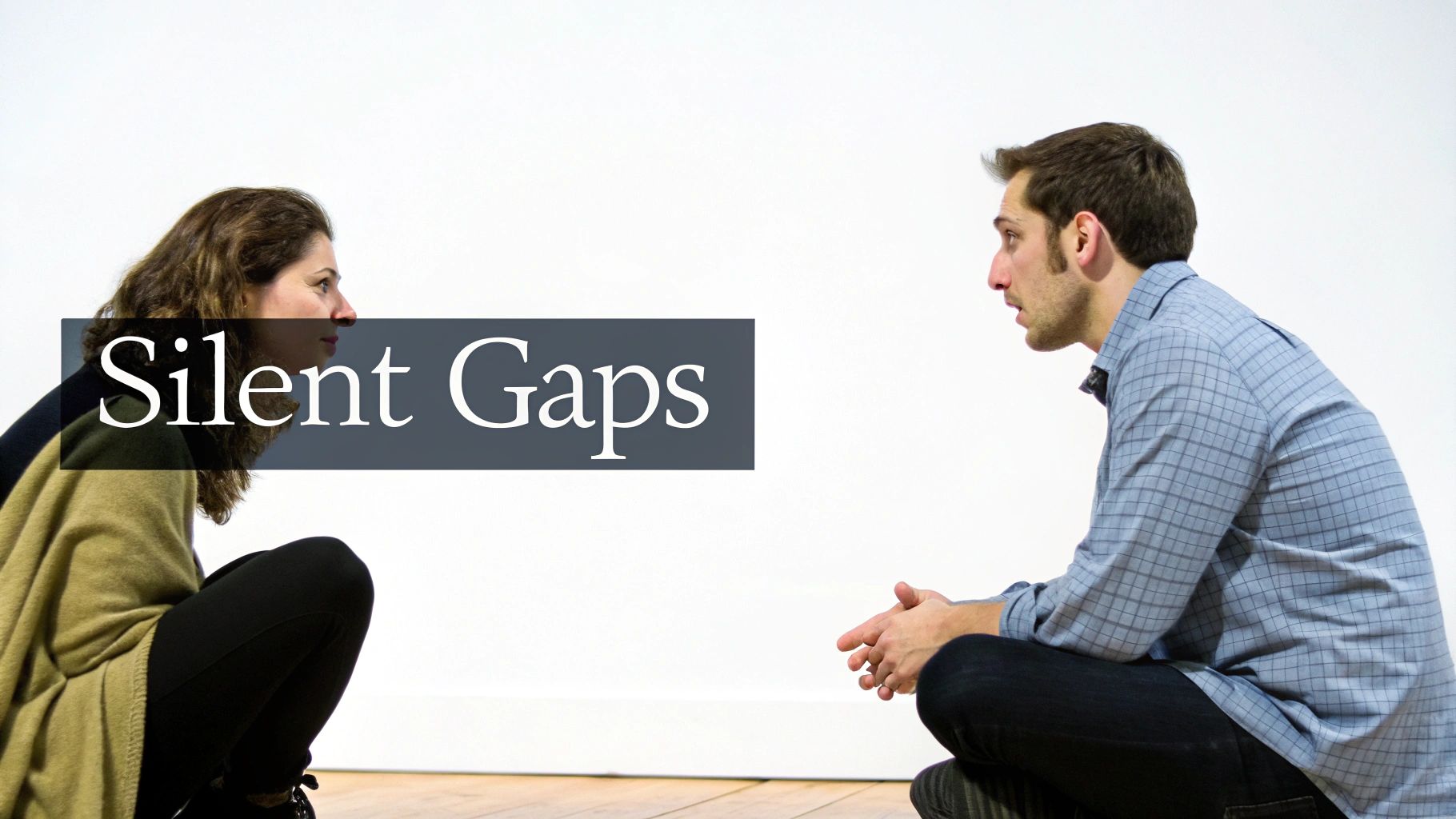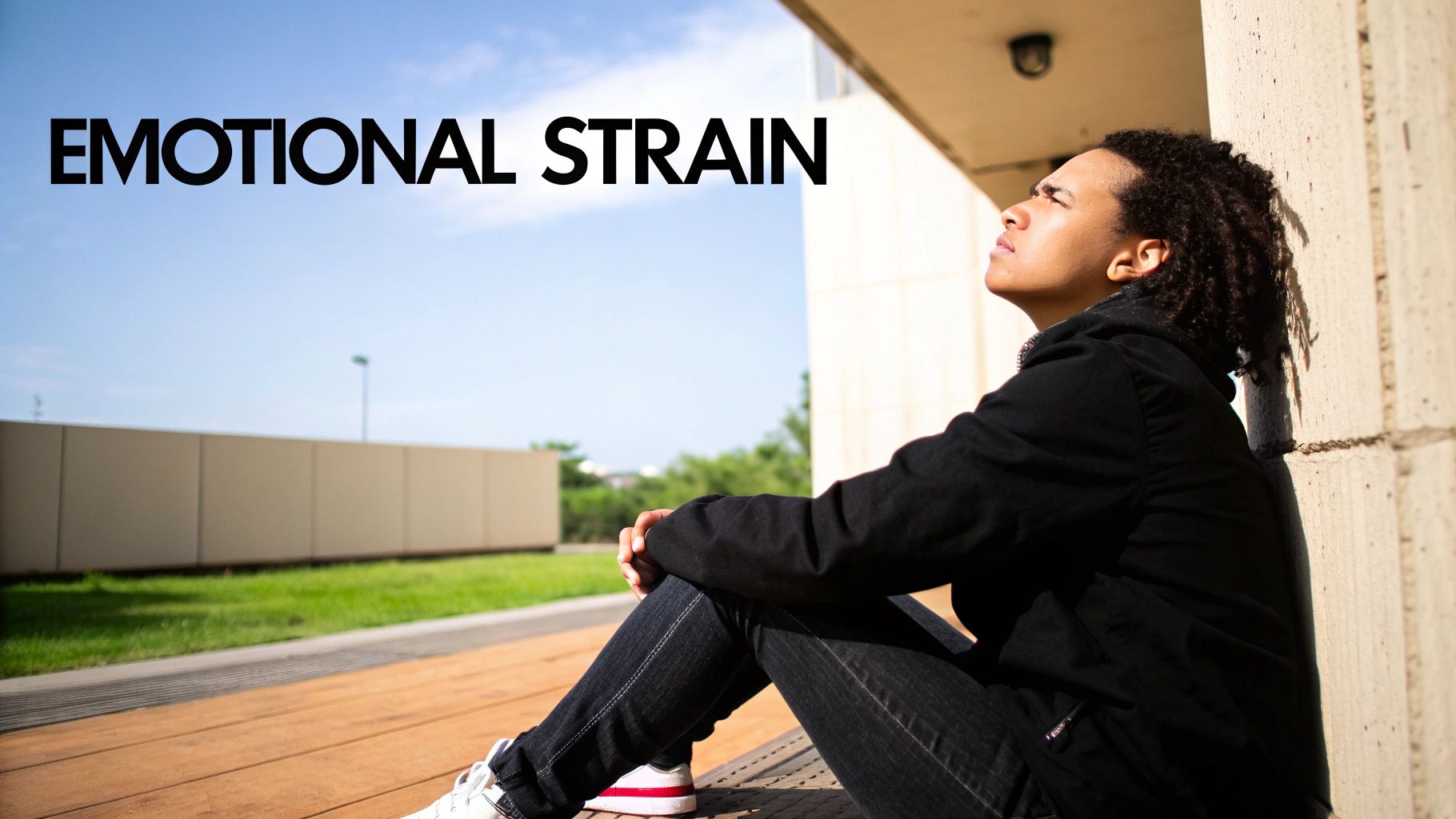Empower Your Life with Adult Sex Education

Beyond The Basics: What Adult Sex Education Really Means
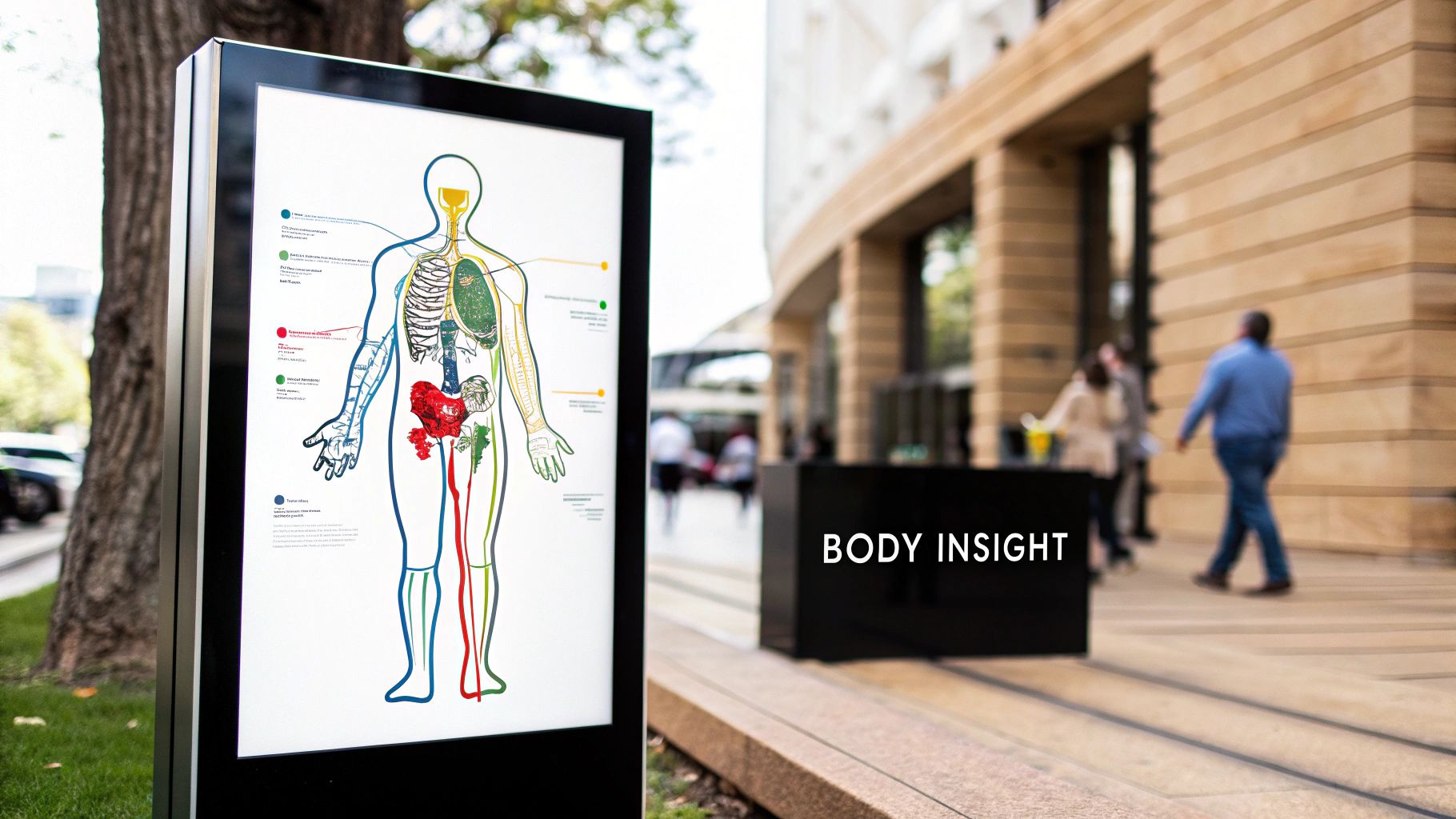
Let's be honest: the sex education many of us received in school wasn't always comprehensive. This section explores what adult sex education truly encompasses, going beyond the sometimes insufficient lessons from our younger years. It's about understanding how adult-focused learning tackles age-specific topics that typical school programs rarely cover.
Adult sex education acknowledges that learning about sexuality is a continuous process. This means ongoing education is important throughout adulthood, even for those who consider themselves knowledgeable. It goes beyond the basic biology lessons we might remember.
Key Components of Adult Sex Education
Modern adult sex education integrates vital elements. These include emotional intelligence, communication skills, and ethical considerations. These components contribute to healthier relationships and more informed choices.
- Emotional Intelligence: Recognizing and managing emotions, both our own and our partners'.
- Communication Skills: Effectively discussing boundaries, consent, and sexual health.
- Ethical Considerations: Understanding the impact of our actions and choices on others.
For example, adults might learn how to discuss consent and sexual health with partners. They might also explore how to navigate difficult conversations about boundaries or desires.
Addressing Evolving Needs Across the Lifespan
Adult sex education also provides a safe space to discuss changing concerns throughout life. This includes navigating intimacy in long-term relationships and understanding how aging impacts sexual health. It also involves exploring evolving desires and preferences. These are topics often overlooked in traditional sex education.
Globally, adult sex education, especially through comprehensive sexuality education (CSE) programs, has broadened. Comprehensive Sexuality Education addresses not just the biological but also the social, emotional, and rights-based aspects of sexual health. The United Nations emphasizes the importance of CSE in reducing risks like sexually transmitted infections (STIs), unintended pregnancies, and sexual violence. Sadly, sexual abuse affects approximately 18% of girls globally, emphasizing the need for education that empowers individuals to recognize and prevent abuse.
Unlearning Harmful Myths and Misinformation
Furthermore, adult sex education helps individuals unlearn harmful myths and misinformation. This is particularly important now, with the prevalence of online content where it can be difficult to distinguish fact from fiction. It helps individuals develop a more accurate and positive view of sexuality.
The Importance of Pleasure and Satisfaction
Finally, adult sex education highlights pleasure and satisfaction as key parts of sexual well-being. It creates an environment where individuals can explore their own desires and preferences without judgment or shame. This holistic approach recognizes that sexual health encompasses both physical and emotional well-being.
Around The World: How Different Cultures Approach Sexual Learning
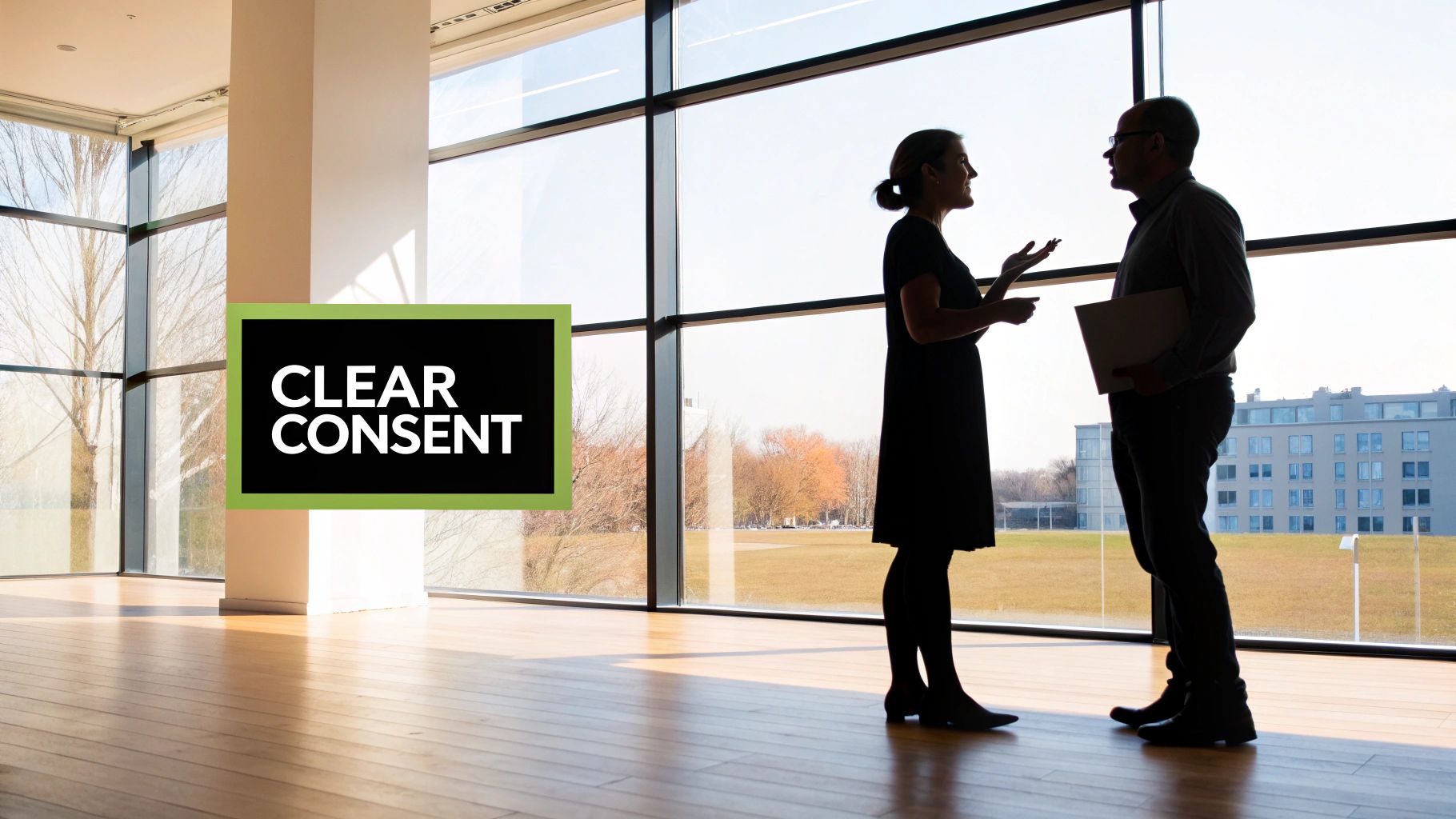
Adult sex education isn't a universal experience. Its implementation varies significantly around the world, shaped by cultural norms, religious beliefs, and political climates. This exploration delves into the diverse global perspectives on this sensitive, yet critical topic. From the progressive approaches of Northern Europe to the more traditional views in other regions, each culture navigates the intricacies of adult sex education in its own unique way.
The Nordic Model: Openness And Consent
The Nordic countries, known for their forward-thinking social policies, often lead discussions on sex education. They emphasize open communication, consent, and body positivity, beginning education early in life. This groundwork continues into adulthood, creating a culture where conversations about sexuality are normalized and welcomed.
Cultural Sensitivities And Obstacles
Elsewhere, cultural sensitivities can present substantial barriers to implementing comprehensive adult sex education. Some cultures may hold strong taboos against open discussions about sexuality. This can make it challenging to introduce adult sex education programs that both respect local values and provide essential information. For further reading, see Our Sitemap for related articles.
The following table illustrates some of the global variations in adult sex education implementation:
Global Adult Sex Education Implementation by Region
This table compares how different regions approach adult sex education implementation, showing policy presence, content focus, and cultural acceptance levels
| Region | Policy Presence | Content Focus | Cultural Acceptance | Implementation Challenges |
|---|---|---|---|---|
| Nordic Countries | Comprehensive policies and legal frameworks exist | Open communication, consent, LGBTQ+ inclusivity, pleasure | Generally high | Maintaining funding, addressing diverse needs |
| Western Europe | Varies by country, generally supportive | Sexual health, contraception, consent | Moderate to high | Addressing cultural and religious diversity |
| Sub-Saharan Africa | Policies often focus on HIV/AIDS prevention | HIV/AIDS prevention, reproductive health | Varies greatly, often influenced by traditional beliefs | Limited resources, cultural stigma, gender inequality |
| Middle East & North Africa | Policies often limited, influenced by religious and cultural norms | Reproductive health, limited discussion of sexuality | Often low, subject to taboos | Social conservatism, religious resistance, gender inequality |
| Asia & Pacific | Highly diverse, ranging from comprehensive to restrictive | Varies greatly, often focusing on reproductive health | Varies greatly, influenced by cultural and religious norms | Limited resources, cultural stigma, diverse needs |
| North America | Varies by country, increasing focus on comprehensive approaches | Consent, healthy relationships, sexual health | Moderate to high, increasing acceptance of LGBTQ+ issues | Political and religious opposition, addressing diverse needs |
| Latin America & the Caribbean | Growing emphasis on comprehensive education | Sexual health, reproductive rights, gender-based violence | Varies greatly, influenced by cultural and religious norms | Limited resources, cultural stigma, gender inequality |
This table shows the vast differences in approaches to adult sex education, highlighting the need for culturally sensitive and adaptable programs. The range of content focus, from basic reproductive health to broader discussions of sexuality and relationships, demonstrates the complexity of this topic.
The Influence of International Bodies
International organizations, such as the World Health Organization, are instrumental in promoting best practices for adult sex education while respecting cultural nuances. These organizations collaborate with governments and local communities to create programs tailored to specific needs. Some programs concentrate on preventing HIV/AIDS, while others tackle issues like gender-based violence and sexual and reproductive health. A 2021 report revealed that 85% of 155 countries surveyed had policies or laws regarding sexuality education. Find more detailed statistics here. More countries mandate such education at the secondary level than at the primary level. However, simply having legal frameworks doesn't ensure comprehensive content or effective implementation.
Modern Approaches and Community Involvement
Despite the challenges, many countries are finding innovative ways to deliver adult sex education. Some utilize technology, such as mobile apps and online platforms, to reach wider audiences. Others leverage community-based programs and peer education to better address specific cultural contexts. These varied methods emphasize the growing recognition of adult sex education as a crucial part of overall health and well-being. By understanding how different cultures approach this subject, we can learn valuable lessons about effective strategies and apply them to our own communities.
The Building Blocks of Effective Sexual Learning
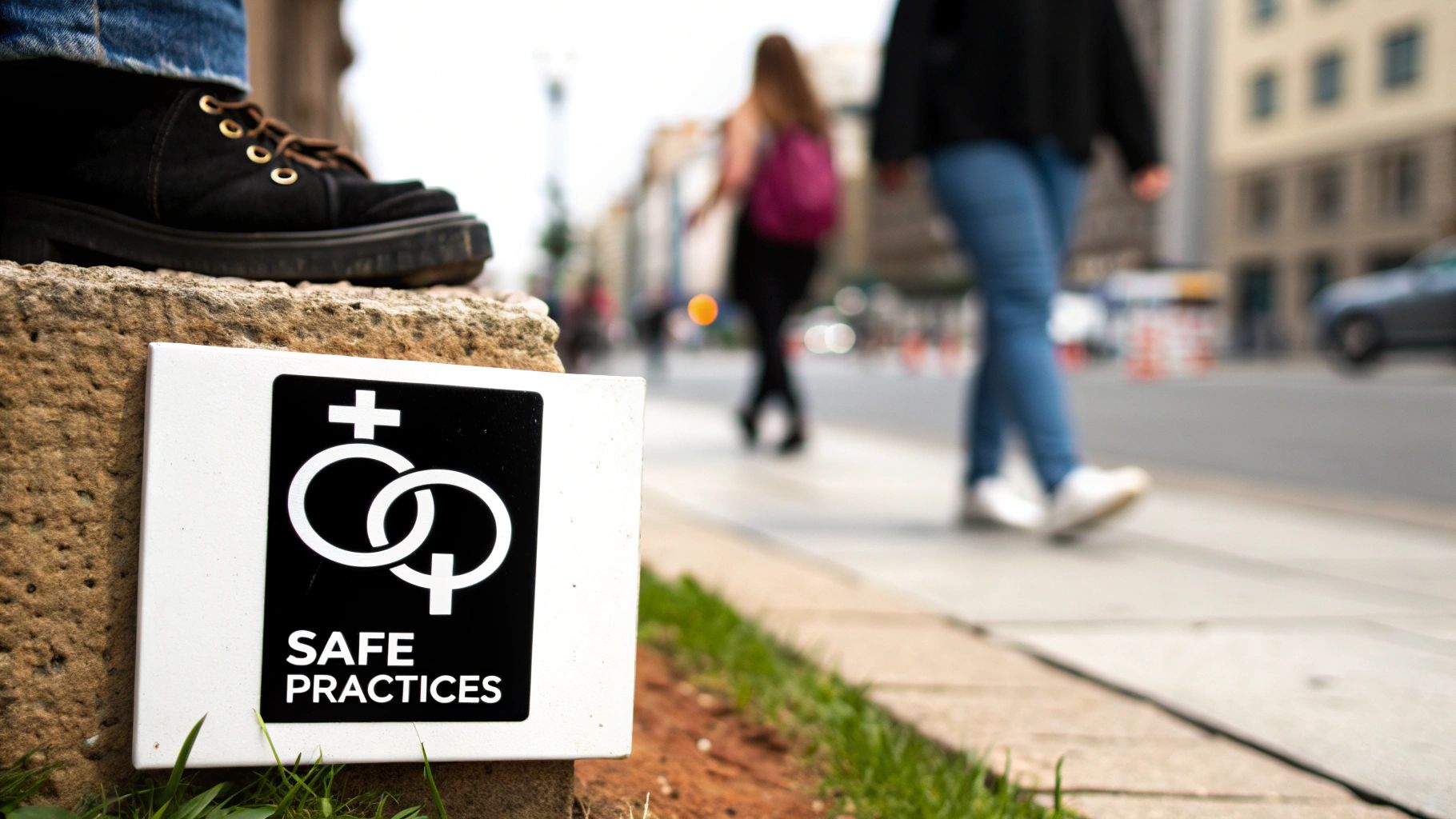
What makes some adult sex education programs truly impactful while others fall short? This section explores the key components that research suggests lead to positive shifts in both behavior and understanding. These elements provide a strong foundation for sexual learning, empowering adults to make informed choices about their sexual health.
Creating a Safe and Inclusive Environment
A truly effective adult sex education program prioritizes a safe and inclusive learning environment. This means creating a space where participants feel comfortable asking questions, sharing personal experiences, and expressing themselves without fear of judgment. Open dialogue is encouraged, allowing individuals to genuinely engage with the material. This foundation of trust is crucial for meaningful learning.
Beyond the Biology: Addressing the Broader Context
While a basic understanding of anatomy and physiology is important, effective adult sex education goes far beyond the biological basics. It explores the social, emotional, and relational dimensions of sexuality. Topics such as communication, consent, body image, and healthy relationships are key. This broader context allows individuals to develop a more comprehensive understanding of their sexual health.
For instance, effective programs might examine how media portrayals shape our perceptions of sex and relationships. Cultural influences also play a significant role, as different cultures may have unique perspectives on adult sex education, shaped by local norms and experiences. For more on cultural influences, you can explore resources like Temptation Cancun Resort.
Empowering Through Communication and Consent
Communication skills and consent are cornerstones of effective adult sex education. Participants learn how to clearly articulate their needs and boundaries, and how to actively listen to and respect those of others. These skills are essential for navigating healthy and fulfilling sexual relationships. Importantly, these communication skills also have a positive impact on other areas of life beyond the bedroom.
Tailoring Content for Diverse Learning Styles
Adults learn in different ways, and effective sex education programs acknowledge this by incorporating diverse teaching methods. These might include interactive discussions, group activities, role-playing, multimedia presentations, and self-reflection exercises. Catering to different learning styles makes the information accessible and engaging for all participants, ultimately promoting deeper understanding and better retention of the material.
Evidence-Based Practices for Lasting Change
Successful adult sex education programs rely on evidence-based practices to facilitate lasting behavior change. This means using research and data to inform curriculum development and teaching strategies. The focus is on proven techniques that effectively increase knowledge, shift attitudes, and promote healthy sexual behaviors. This commitment to evidence-based practices ensures that the education provided is rooted in solid research and has the potential to make a genuine difference. By incorporating these fundamental building blocks, adult sex education programs can create powerful learning experiences that empower individuals to embrace their sexuality with confidence and make well-informed decisions about their sexual health and overall well-being.
Meeting Unique Needs: Tailored Approaches That Work
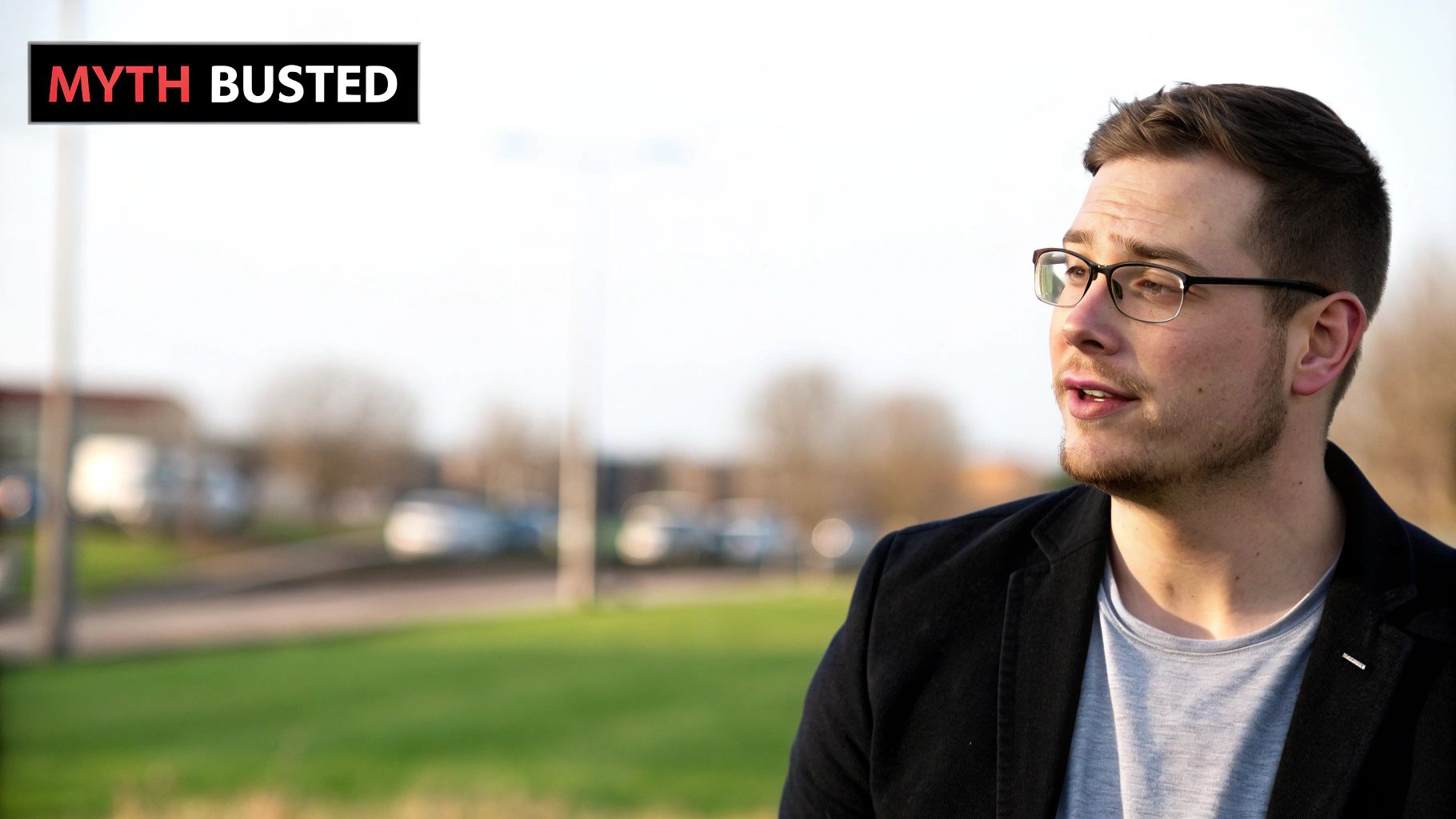
Traditional adult sex education often falls short. Why? Because the common one-size-fits-all model overlooks the diverse needs of various communities. This leaves many individuals without crucial information. This section explores how educators are creating programs that cater to the unique needs of different groups, making adult sex education more inclusive and effective.
Recognizing the Diversity of Learners
Adult learners have varied backgrounds, experiences, and learning styles. Effective sex education acknowledges these differences. Moving beyond generalized approaches is crucial. This means recognizing and addressing the specific needs of marginalized communities.
LGBTQ+ Inclusive Education
LGBTQ+ individuals often need information beyond the heteronormative focus of traditional sex education. Topics like sexual health in same-sex relationships, gender identity, and transitioning are vital. Specialized programs create a more inclusive environment for LGBTQ+ adults, fostering understanding of their specific challenges and opportunities.
Addressing the Needs of Older Adults
Older adults also have unique concerns related to intimacy and sexual health. Changes in physical abilities, hormonal shifts, and the emotional aspects of aging can significantly impact sexual experiences. Programs tailored for this group can address these changes, offering valuable guidance on maintaining intimacy and sexual well-being in later life.
Accessibility for People With Disabilities
Accessibility in adult sex education is paramount. This includes offering materials in accessible formats and creating accommodating learning environments for diverse physical and cognitive needs. Ensuring accessibility empowers individuals with disabilities to participate fully and access essential information. You might be interested in: Our sitemap for related articles.
Navigating Cultural and Religious Contexts
Cultural and religious beliefs play a significant role in shaping views on sexuality. Sensitive and respectful approaches are necessary when engaging with diverse religious communities. Educators must deliver factual information while honoring individual beliefs and values. Adapting programs to address specific cultural sensitivities is key.
Supporting Learners With Limited Prior Education
Some adults may have limited prior sex education. This lack of foundational knowledge can create challenges. Tailored approaches provide a solid base of understanding before moving to more complex topics, ensuring all learners can access and benefit from the information.
Creative Outreach Strategies
Reaching marginalized communities often requires inventive outreach strategies. This may involve partnering with community organizations, using social media platforms, or offering programs in non-traditional settings. Thinking outside the box allows educators to connect with individuals who might not otherwise seek out adult sex education. This helps break down barriers and fosters more inclusive learning opportunities. These targeted programs are incredibly beneficial, encouraging open conversations and empowering individuals with knowledge to navigate their sexual lives confidently and make informed choices.
To further illustrate the importance of tailored approaches, the following table details specific strategies for diverse populations:
Introduction to Table: The table below outlines specific strategies, topics, and delivery methods tailored to the unique learning needs of various adult populations. This detailed breakdown highlights the importance of a personalized approach to adult sex education.
| Population | Key Educational Needs | Recommended Topics | Effective Delivery Methods | Success Indicators |
|---|---|---|---|---|
| LGBTQ+ Adults | Inclusive, non-heteronormative information | Safe sex practices, gender identity, transitioning, STIs, relationship dynamics | Support groups, online forums, community workshops, peer education | Increased knowledge, reduced stigma, improved access to resources |
| Older Adults | Addressing age-related changes, maintaining intimacy | Physical and hormonal changes, communication skills, sexual dysfunction, chronic illness and sexuality | Private consultations, group discussions, online resources | Improved sexual satisfaction, increased comfort discussing sexual health |
| Adults with Disabilities | Accessible formats, accommodating environments | Healthy relationships, consent, body image, sexual health resources | Adapted materials, sign language interpretation, assistive technology | Increased self-advocacy, improved access to information and services |
| Individuals with Limited Prior Education | Foundational knowledge, clear and simple language | Basic anatomy and physiology, reproduction, contraception, consent | Small group settings, one-on-one counseling, visual aids | Increased understanding of basic concepts, improved communication skills |
| Diverse Cultural and Religious Communities | Culturally sensitive and respectful approaches | Addressing cultural norms and values, religious beliefs and sexuality, open communication | Community partnerships, faith-based organizations, culturally adapted materials | Increased comfort discussing sexuality within cultural context |
Conclusion of Table: As the table demonstrates, tailoring adult sex education to specific populations is essential for maximizing its effectiveness. By addressing unique needs and learning styles, we can create more inclusive and empowering learning experiences for everyone.
Digital Transformation: Learning Intimacy in the Online Era
The internet has transformed how adults learn about sexuality. While it offers increased access to information, it also presents the challenge of misinformation. This section explores the diverse landscape of online sex education resources, from valuable apps and websites to unreliable content that perpetuates harmful myths. We'll examine how adults find and utilize online sexual information and discuss which digital approaches are most effective.
Navigating the Online World of Sex Education
The internet offers a vast amount of information on adult sex education, but finding reliable resources can be difficult. Not all online content is created equal, and misinformation can spread rapidly. This highlights the importance of careful evaluation and critical thinking.
Adults frequently use search engines like Google, social media platforms, and online forums to find answers to their questions about sex. However, these sources don't always provide accurate information. Evaluating the source and credibility of the material is crucial.
Identifying Trustworthy Sources Online
Several key indicators can help you identify reliable sources for online sex education:
- Look for websites from reputable organizations: Examples include government health agencies, medical associations, or well-established sexual health organizations.
- Check for evidence-based information: Trustworthy sources will ground their content in scientific research and data, not personal opinions or anecdotes.
- Seek out websites with clear credentials: Look for sites with contributions from qualified professionals.
- Be wary of sites promoting products or services: The information on these sites may be biased or inaccurate.
- Look for up-to-date information: Sexual health research is constantly evolving, so ensure the information is current.
The Benefits and Challenges of Digital Learning
Technology offers significant advantages for adult sex education. Online resources are readily accessible 24/7 and provide a level of anonymity that many find comforting. This accessibility is especially valuable for those who may lack access to traditional sex education programs. Check out our guide on our other articles.
However, there are also drawbacks to consider. These include privacy concerns, inaccurate content, and the absence of personalized guidance. It's essential to approach online resources with a critical eye.
Practical Strategies for Evaluating Information
How can you effectively assess the quality of online information? Here are some practical strategies:
- Cross-reference information with multiple reputable sources: If several trusted sources agree on a point, it's more likely to be accurate.
- Be skeptical of sensationalized headlines or claims: If something seems too good to be true, it probably is.
- Examine the website's "About Us" section: This section should provide information about the organization's mission and credentials.
- Look for external links to supporting evidence: Reliable sources will frequently cite studies or research to support their claims.
Harnessing Digital Tools Effectively
By using careful evaluation strategies, adults can leverage the power of digital tools to address knowledge gaps, improve their understanding of sexuality, and make well-informed decisions about their sexual health. These skills are valuable not just for adult sex education but for informed decision-making in general.
Breaking Through Barriers: Making Adult Sex Education Accessible
Adult sex education offers numerous benefits, yet faces significant obstacles. These range from funding shortages and restrictive policies to cultural stigma and institutional resistance. By examining the successes of advocates and program leaders, we can learn effective strategies to overcome these challenges.
Funding and Policy: Securing Necessary Support
Securing adequate funding is a major hurdle. Adult sex education programs often compete with other initiatives for limited resources, especially when public funding is scarce. This can hinder the development and sustainability of high-quality programs. Restrictive policies pose another challenge. Some areas have laws or regulations limiting the content covered, which can prevent comprehensive discussion of critical topics.
Combating Cultural Stigma: Shifting Societal Perceptions
Cultural stigma surrounding sexuality is a significant barrier. Open discussions about sex are often discouraged in many societies, creating shame and discomfort. This makes it difficult for individuals to seek out or engage with adult sex education programs. Changing societal perceptions and promoting open communication and acceptance are essential to overcoming this stigma.
Addressing Institutional Resistance: Building Partnerships and Demonstrating Value
Institutions, including schools, healthcare providers, and community organizations, can sometimes resist adult sex education programs. This resistance can arise from concerns about controversy, limited resources, or differing priorities. Building strong partnerships and demonstrating the tangible benefits of these programs is crucial for overcoming institutional resistance.
Strategies for Success: Overcoming Challenges in Diverse Contexts
Educators and advocates are using a variety of successful strategies to overcome these obstacles. Building community support is key. By engaging community members and showcasing the value of adult sex education, programs can gain wider acceptance.
- Crafting compelling messages: Framing adult sex education as a matter of public health and individual well-being can resonate with a broader audience.
- Forming strategic partnerships: Collaborations with organizations like healthcare providers or social service agencies can expand reach and resources.
- Demonstrating tangible benefits: Highlighting positive outcomes, such as lower rates of STIs or improved relationship satisfaction, can strengthen support for continued investment.
Addressing Resistance with Empathy: Fostering Understanding and Dialogue
Resistance to adult sex education often stems from fear or misunderstanding. Addressing this requires empathy and open, respectful dialogue. By acknowledging concerns and providing factual information with sensitivity, educators can build trust and foster understanding. Advocating for comprehensive adult sex education requires passion, strategic communication, and empathy. By demonstrating the value of these programs and addressing resistance respectfully, we can work towards ensuring all adults have access to the information and support they need to make informed decisions about their sexual health and well-being.
Ready to enhance your intimacy and understanding? Explore G-Spot 101 today and discover the power of adult sex education. Learn more at G-Spot 101


